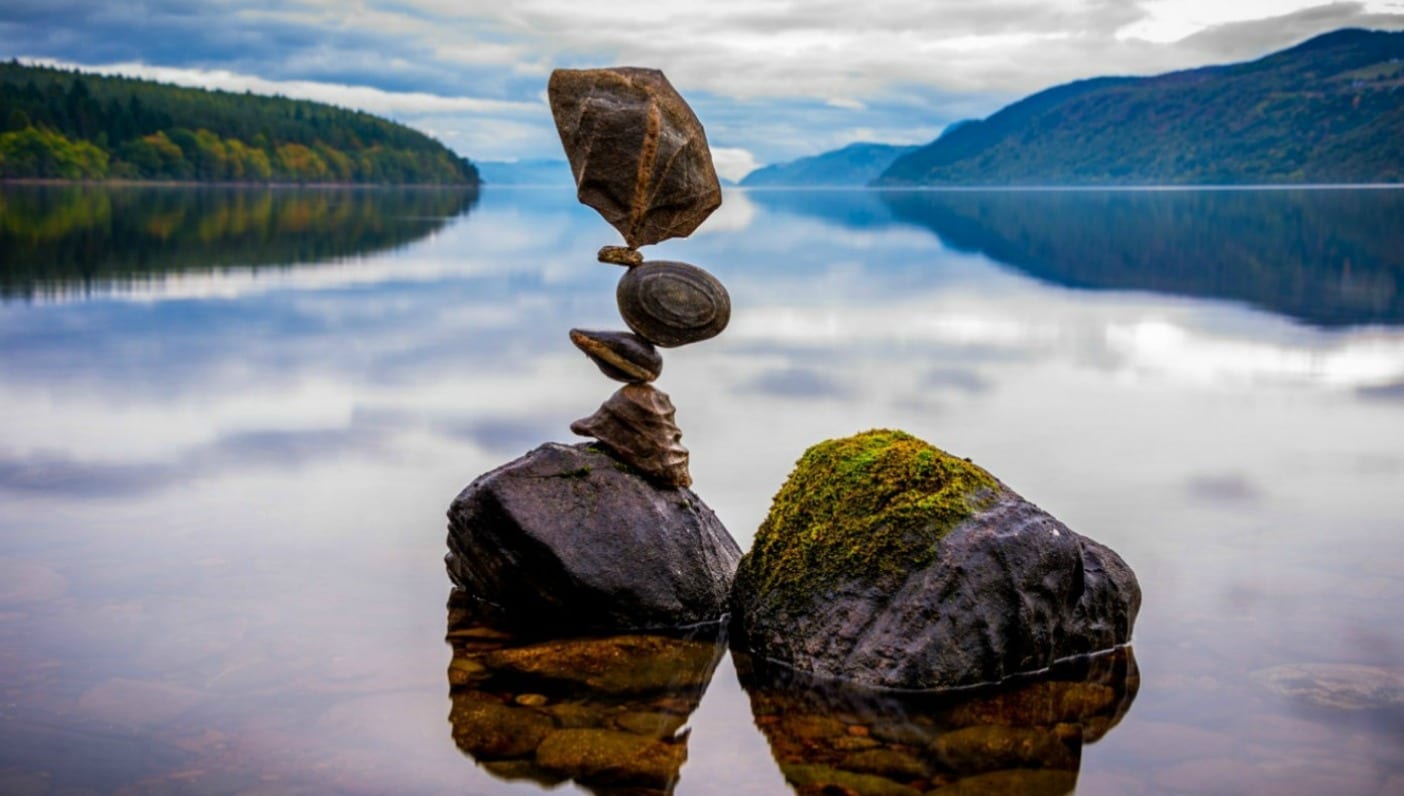
In the summer of 2008, in the midst of a psychedelic experience, a 24-year-old Michael Grab sat down in Boulder Creek, Colorado and began to balance stones. Tiny pebbles emerged from the water, holding up impossibly large boulders. Elaborate formations defied gravity, held together only by Michael’s precise placing of rocks.
Seven years later, Michael has traveled the world performing at festivals, events, and the World Economic Forum, building more than a thousand rock formations that achieve the impossible. Bridges, dragons, balloons, towering peaks—all made of stones with gravity being the only “glue.”
His commitment to his practice is admirable. In snow, rain, and icy conditions, Michael still goes out to the creek and builds.“It’s my daily yoga practice, and it’s my way of life. Wherever I go, I’m usually looking for rocks and possibilities,” he says.
It seems impossible for him to not be with the stones. There have been months over the years where Michael has had to live out of his car—yet nearly every day he is driven to stack rocks. Now he makes a living from the ethereal photographs he takes before the formations collapse, or he pulls them down.
Because in contrast to cairn building, Michael sees his practice as a highly transient, meditative art form, rather than something built to last. His lack of attachment is moving. Even when disbelievers topple his creations with the hope of revealing him as a fake, Boulder residents say Michael accepts it just as part of nature, and is happy for them to see the truth.
“However it happens, they are always erased,” says Michael of his rock formations. “From a philosophical perspective, it has more resonance with ideas of zen or wabi sabi—in which there is a core appreciation of impermanence.”
His practice does indeed seem like a zen meditation. Formations can take between two hours and a whole day to complete. During that time, Michael says his mind goes through various stages. “For the first half, the thoughts are very active, but then as I become engrossed in the process, thoughts disappear. There comes a point when the mind shuts off entirely like in a deep meditative state. And finally, when I approach the ‘zero-point’ with minute final adjustments, it is like nothing ‘other’ exists. I am inside the vibrations of the rocks and everything in my surroundings becomes one. In a very literal sense it feels like creating a state of union with the environment.”
Perhaps it is working from this unified perspective that enables Michael to break the barriers of belief, and leave so many awestruck by his creations. He kindly shared some reflections from his time spent with stones that may bring balance to our own lives.
See the impossible and do it anyway.
“When my first thought is ‘this is impossible,’ I do it anyway. In the words of Yoda: ‘Do. Or do not. There is no try.’ So I just do. It seems like a recipe for magic—to do the ‘impossible.’ Most of the time I end up finding a solution, and sometimes, unexpected things happen—perhaps the light in that moment perfectly highlights the contours of the rocks—and the formation takes on a certain ethereal beauty beyond words.”
Slow down.
“Balance requires a minimum of three contact points. Luckily, every rock is covered in a variety of tiny to large indentations that can act as a natural tripod for the rock to stand upright. By paying close attention to the vibrations of the rocks, I can start to feel even the smallest ‘clicks’ as the notches of the rocks are moving over one another. Sometimes I don’t even feel the vertices of the finest ‘tripods’ or balance points until I’ve spent enough time slowing down to meet the vibrations.”
Be one with your environment.
“Because I am always dealing with nature in some way, I have learned that I’m not always in control—that learning to listen and adapt in real time are essential skills for dancing with the universe. During a recent visit to Cornwall, England, I went to the same cove nearly every day for two weeks, and each day I was listening and learning new things. I eventually turned into a brief encyclopedia of tide times and levels, sunsets, sunrises, and wind directions… And tapping into these local rhythms often improves my work to some degree. Hence, the last days often yield my favorite formations from each location.”
Trust your feelings.
“I’ve learned to trust my feelings. If a certain rock shines or twinkles for a split second, I’m curious. Sometimes I look twice, other times not. The art here, and in life, is learning to flow with my surroundings; learning to feel when is best to accept or change my current condition.”
Above all, Michael says that the balancing of stones has brought into focus that everything in the universe relies on everything else. “My existence impacts your existence and vice versa. That is reflected to me in the stones. Every time I make an adjustment to an angle, all the other stones have to change to compensate. Every piece relies on every other piece in order to hold the balance of the whole.”
Learn more about Michael Grab and his work, and see more photographs of his stone formations on his website: www.gravityglue.com.
All photos courtesy of Michael Grab
—

Helen Avery is a Section Editor at Wanderlust Media, working on the Vitality, Wisdom, and Wellness channels on wanderlust.com and YOGANONYMOUS. She is a journalist, writer, yoga teacher, and full-time dog walker of Millie.


